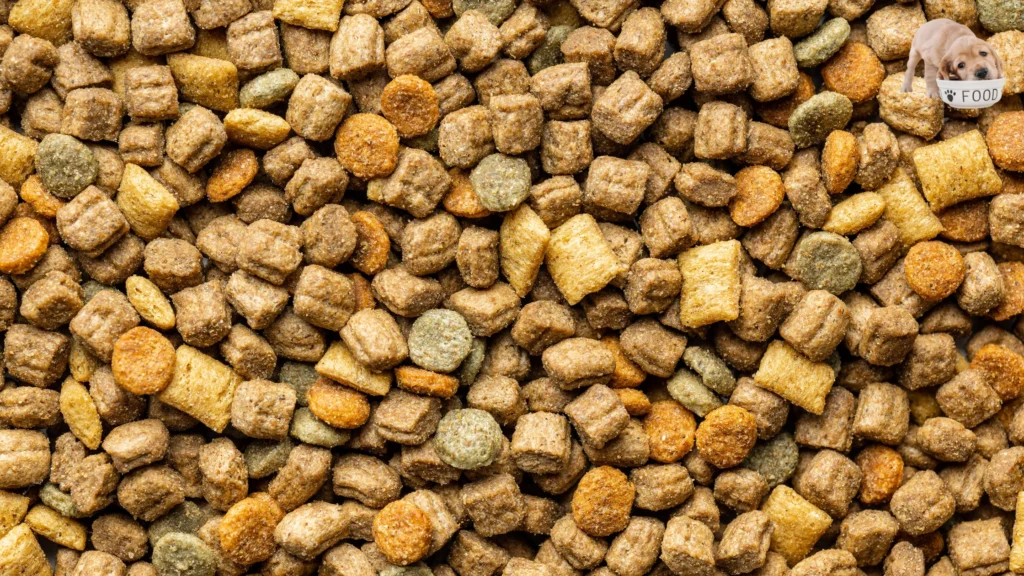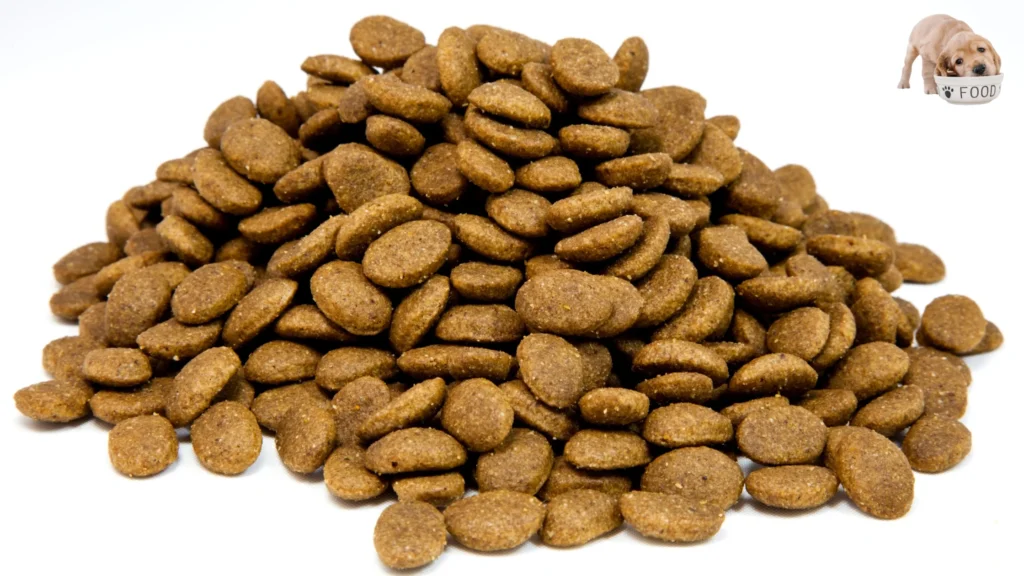Discover the perfect balance of nutrition and palatability with our comprehensive guide to “Soft Dry Dog Food.” Explore the benefits, debunk myths, and make informed choices for your canine companion’s well-being. Unveil the world of semi-moist kibble and elevate your dog’s culinary experience today.

In the realm of pet care, choosing the right food for your furry companion is of utmost importance. As our understanding of canine nutrition evolves, so do the options available in the market. One such option that has gained popularity in recent times is “Soft Dry Dog Food.” In this comprehensive guide, we will delve into the intricacies of soft dry dog food, from its composition and benefits to choosing the best for your canine friend.
Introduction
A. Definition of Soft Dry Dog Food
Soft dry dog food, often referred to as semi-moist or chewy kibble, is a unique formulation that combines elements of both dry and wet dog food. Unlike traditional dry kibble, soft dry dog food has a softer texture, making it a palatable choice for many dogs.
B. Importance of Choosing the Right Dog Food
Selecting the right dog food is crucial for ensuring the overall health and well-being of your pet. It goes beyond merely satisfying hunger; it’s about providing a balanced and nutritious diet that supports your dog’s specific needs.
C. Evolution of Dog Food Types
The landscape of dog food has evolved significantly over the years. From simple homemade meals to a myriad of commercial options, the market now offers specialized formulations catering to various dietary requirements and preferences.
Understanding Soft Dry Dog Food

A. Composition and Ingredients
1. Protein Sources
One key aspect of soft dry dog food is the diverse range of protein sources. From animal meats to plant-based proteins, understanding the origin of protein in your dog’s food is essential for optimal nutrition.
2. Carbohydrates and Fiber Content
Soft dry dog food often incorporates carbohydrates for energy and fiber for digestive health. Examining the type and quantity of carbohydrates can help in choosing a formulation that aligns with your dog’s dietary needs.
3. Essential Fats and Oils
Healthy fats are vital for a dog’s coat, skin, and overall well-being. Soft dry dog food typically contains essential fats and oils, contributing to a glossy coat and supporting various bodily functions.
B. Nutritional Benefits
1. Improved Digestibility
The soft texture of this dog food facilitates easier digestion, making it an ideal choice for dogs with sensitive stomachs or digestive issues.
2. Enhanced Palatability
Dogs, known for their discerning tastes, often find soft dry dog food more palatable. This can be particularly advantageous for pet owners dealing with picky eaters.
3. Healthier Coat and Skin
The balanced nutritional profile of soft dry dog food translates into healthier skin and a lustrous coat. Essential nutrients play a pivotal role in maintaining your dog’s external appearance.
Choosing the Best Soft Dry Dog Food

A. Reading Labels and Understanding Ingredients
1. Identifying Quality Proteins
A critical aspect of selecting soft dry dog food is scrutinizing the ingredient list. Look for high-quality protein sources, such as real meat, as the primary ingredient.
2. Avoiding Fillers and Additives
Steer clear of formulations with excessive fillers and additives. Opting for natural and wholesome ingredients ensures that your dog receives nutrition without unnecessary additives.
B. Considering Breed and Size-specific Formulas
1. Small Breed Soft Dry Dog Food
Smaller dog breeds may have different nutritional requirements. Choose soft dry dog food formulated specifically for small breeds to address their unique needs.
2. Large Breed Soft Dry Dog Food
Large breeds, on the other hand, require formulations that support joint health and manage their growth rate. Seek soft dry dog food tailored to the needs of larger dogs.
C. Addressing Special Dietary Needs
1. Allergen-Free Options
For dogs with food sensitivities or allergies, exploring allergen-free soft dry dog food options can be beneficial in preventing adverse reactions.
2. Prescription Soft Dry Dog Food
In some cases, veterinarians may recommend prescription soft dry dog food to address specific health concerns. Follow professional advice for optimal results.
Transitioning to Soft Dry Dog Food

A. Gradual Introduction for Puppies
1. Mixing with Puppy Formula
Puppies, with their developing digestive systems, benefit from a gradual transition. Mix soft dry dog food with their current puppy formula to ease the switch.
2. Monitoring Digestive Responses
Observe your puppy’s digestive responses during the transition. Any signs of discomfort or irregularities should be addressed promptly.
B. Transitioning Adult Dogs
1. Phasing Out Current Diet
For adult dogs accustomed to a different diet, gradual phasing out of the current food while introducing soft dry dog food can prevent digestive upsets.
2. Adjusting Portion Sizes
Determine appropriate portion sizes based on your dog’s weight, age, and activity level. Adjusting portions ensures a well-balanced diet.
Common Misconceptions About Soft Dry Dog Food

A. Soft vs. Wet Dog Food: Debunking Myths
Clarifying misconceptions about the differences between soft dry dog food and wet dog food helps pet owners make informed choices based on their dog’s preferences and needs.
B. Addressing Concerns About Dental Health
Contrary to some beliefs, soft dry dog food can contribute positively to dental health. We explore how the texture and composition play a role in dental care.
C. Dispelling Notions About Digestive Issues
Concerns about digestive issues often surround soft dog food. We address these concerns and provide insights into maintaining a healthy digestive system.
VI. Health Considerations and Benefits
A. Impact on Dental Health
1. Soft Texture and Dental Care
Soft dry dog food can have a positive impact on dental health. The texture encourages chewing, which, in turn, aids in maintaining healthy teeth and gums.
2. Chewing and Tartar Control
The act of chewing, promoted by the soft texture, helps control tartar buildup. This can be particularly beneficial in preventing dental issues over time.
B. Weight Management with Soft Dry Dog Food
1. Controlling Caloric Intake
For dogs prone to weight gain, soft dry dog food allows for precise control of caloric intake. This aids in weight management and prevents obesity-related health issues.
2. Supporting Weight Loss Efforts
Tailored formulations for weight management make soft dry dog food an effective tool in supporting weight loss efforts in overweight or obese dogs.
C. Special Formulas for Senior Dogs
1. Joint Support
Senior dogs often face joint issues. Soft dry dog food with added joint-supporting ingredients can contribute to maintaining mobility and comfort.
2. Cognitive Function
Special formulations for senior dogs may include ingredients that support cognitive function, promoting mental alertness and overall well-being.
VII. Reviews and Recommendations
A. Customer Reviews and Testimonials
Exploring the experiences of other pet owners through customer reviews and testimonials provides valuable insights into the effectiveness and palatability of different soft dry dog food brands.
B. Expert Opinions on Soft Dry Dog Food Brands
1. Top Picks for Premium Soft Dry Dog Food
Experts may recommend premium soft dry dog food brands known for their high-quality ingredients and nutritional profiles.
2. Budget-Friendly Options with Quality
For pet owners on a budget, experts can guide them toward budget-friendly options that don’t compromise on quality.
VIII. Homemade Soft Dry Dog Food Recipes
A. DIY Soft Dry Dog Food vs. Commercial Options
Understanding the pros and cons of DIY soft dry dog food versus commercial options empowers pet owners to make an informed decision based on their lifestyle and preferences.
B. Balanced Nutritional Ingredients
1. Proteins, Carbohydrates, and Fats
Creating a balanced homemade soft dry dog food recipe involves carefully selecting proteins, carbohydrates, and fats to meet your dog’s nutritional needs.
2. Vitamins and Minerals
Supplementing homemade recipes with essential vitamins and minerals ensures a complete and balanced diet for your furry friend.
IX. Addressing Concerns and FAQs
A. Common Questions About Soft Dry Dog Food
1. Can All Breeds Benefit from Soft Dry Dog Food?
Understanding the suitability of soft dry dog food for different breeds addresses concerns about its universal applicability.
2. How to Deal with Picky Eaters?
Tips and tricks for dealing with picky eaters can help pet owners navigate feeding challenges and ensure their dogs receive adequate nutrition.
Frequently Asked Questions (FAQs) About Soft Dry Dog Food
Can soft dry dog food be part of a homemade diet plan?
Soft dry dog food can be incorporated into a homemade diet plan, providing a convenient option for pet owners who prefer a more hands-on approach to their dog’s nutrition.
What’s the difference between soft dry and wet dog food?
Soft dry dog food is a unique blend of dry and wet, offering a softer texture. Understanding the differences can help pet owners make choices based on their dog’s preferences and specific dietary needs.
How to deal with picky eaters and soft dry dog food?
For picky eaters, introducing soft dry dog food’s enhanced palatability can be beneficial. Mixing it with their current food or exploring different flavors may help overcome feeding challenges.
Can soft dry dog food be homemade?
Yes, soft dry dog food can be made at home. However, it’s crucial to ensure a balanced nutritional profile by selecting the right proteins, carbohydrates, fats, vitamins, and minerals for your dog’s specific requirements.
Are there special formulas for senior dogs?
Yes, there are special formulations for senior dogs, often including ingredients that support joint health and cognitive function. These formulas are tailored to meet the unique needs of aging dogs.
How does soft dry dog food support weight management?
Soft dry dog food allows precise control of caloric intake, making it an effective tool for weight management. There are also formulations specifically designed to support weight loss efforts in overweight or obese dogs.
Are there allergen-free options for dogs with sensitivities?
Yes, there are allergen-free options available in soft dry dog food formulations. These options cater to dogs with food sensitivities or allergies, providing a safe and nutritious alternative.
Can puppies transition to soft dry dog food?
Yes, puppies can transition to soft dry dog food. It’s recommended to mix it gradually with their current puppy formula to allow their developing digestive systems to adjust.
How does soft dry dog food contribute to dental health?
The soft texture encourages chewing, promoting dental health by controlling tartar buildup. This can be beneficial in maintaining healthy teeth and gums over time.
Is soft dry dog food suitable for all breeds?
Soft dry dog food is generally suitable for all breeds, but individual preferences and dietary needs may vary. It’s essential to consider your dog’s size, age, and health requirements when choosing the right formulation.
Explore the world of soft dry dog food with these FAQs to make informed decisions that cater to your furry friend’s individual needs and preferences.
Can I Feed Fruits to My Dog?
Feeding fruits to your dog can be a healthy and enjoyable addition to their diet. However, it’s crucial to be mindful of the types of fruits and the quantities you offer. Some fruits are safe and packed with essential nutrients, while others can be harmful to your dog’s health.
Tips for Feeding Fruits to Dogs:
- Safe Fruits: Opt for dog-friendly fruits such as apples, bananas, blueberries, strawberries, and watermelon. Remove seeds and pits, and ensure they are cut into bite-sized, manageable pieces.
- Avoid Toxic Fruits: Certain fruits like grapes, raisins, and citrus fruits can be toxic to dogs and should be strictly avoided. Always check for potential hazards before introducing a new fruit.
- Moderation is Key: While fruits are a healthy treat, they should be given in moderation. Too much fruit can lead to digestive issues and an excess intake of natural sugars.
- Allergies: Watch for any signs of allergies or sensitivities when introducing a new fruit. If your dog shows signs of discomfort, discontinue the fruit and consult with your veterinarian.
- Consult Your Vet: Before introducing fruits into your dog’s diet, consult with your veterinarian. They can provide personalized advice based on your dog’s breed, size, and health conditions.
Remember, every dog is unique, and what works for one may not work for another. By being cautious and informed, you can incorporate fruits into your dog’s diet in a way that enhances their nutrition and enjoyment.
Conclusion
A. Recap of Key Points
Summarizing the key points reinforces the importance of informed decision-making when it comes to selecting the right soft dry dog food for your pet.
B. Making Informed Choices for Your Dog’s Nutrition
Empowered with knowledge, pet owners can make informed choices that align with their dog’s unique needs and preferences.
C. Future Trends in Dog Food Evolution
As the field of canine nutrition continues to advance, we anticipate exciting innovations and trends that will shape the future of dog food.
Any query feel free to contact.
